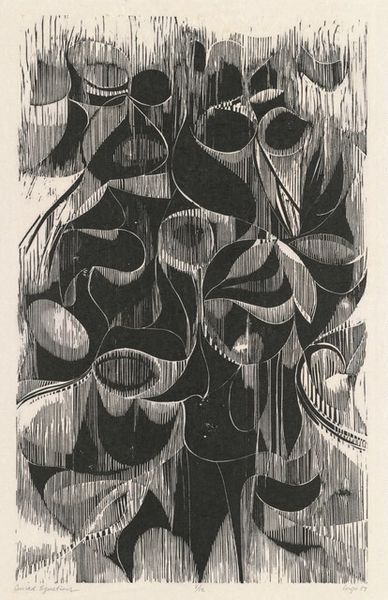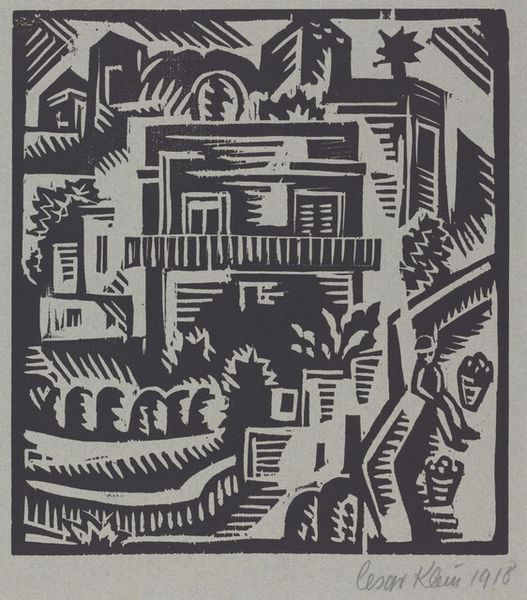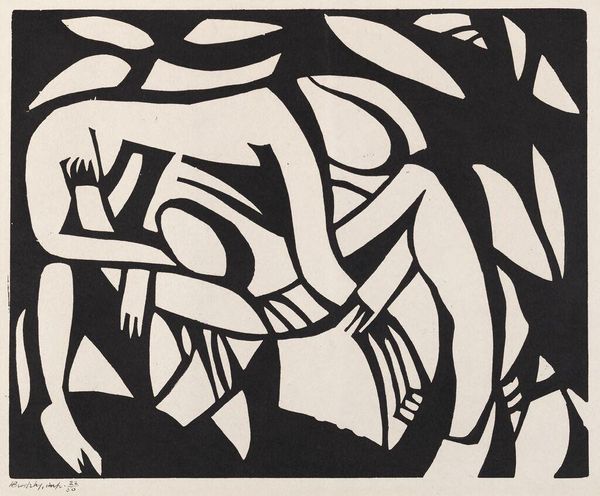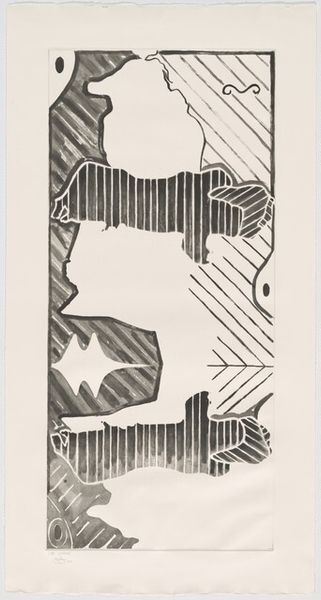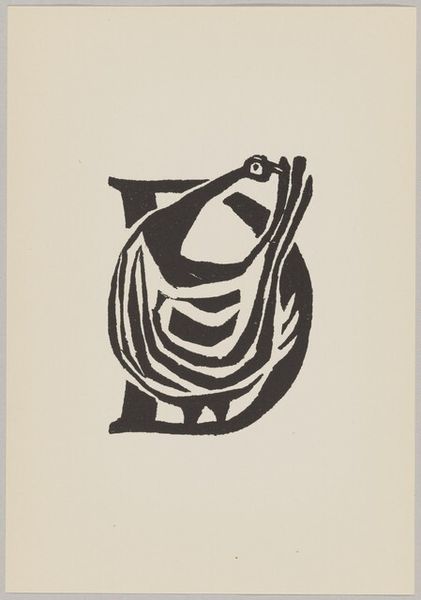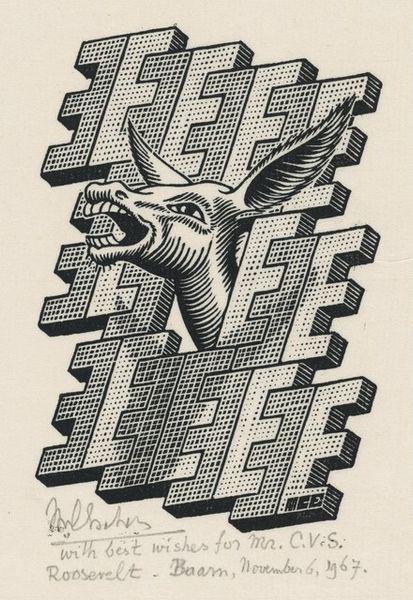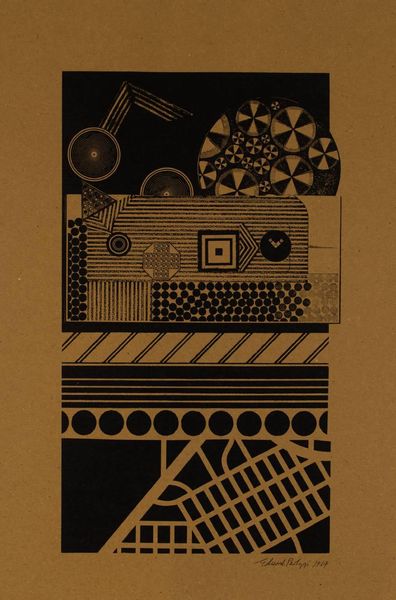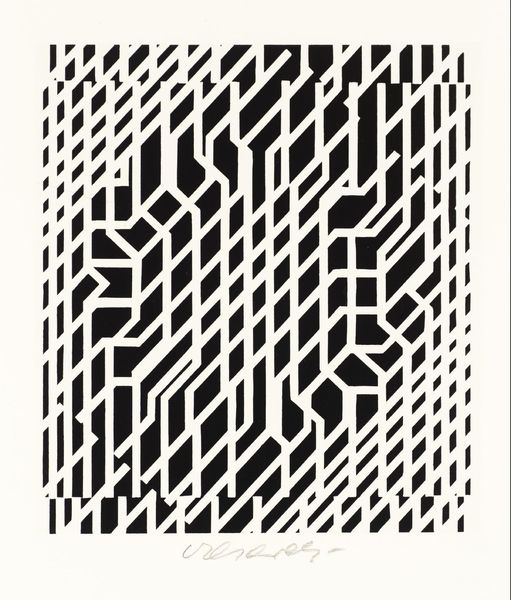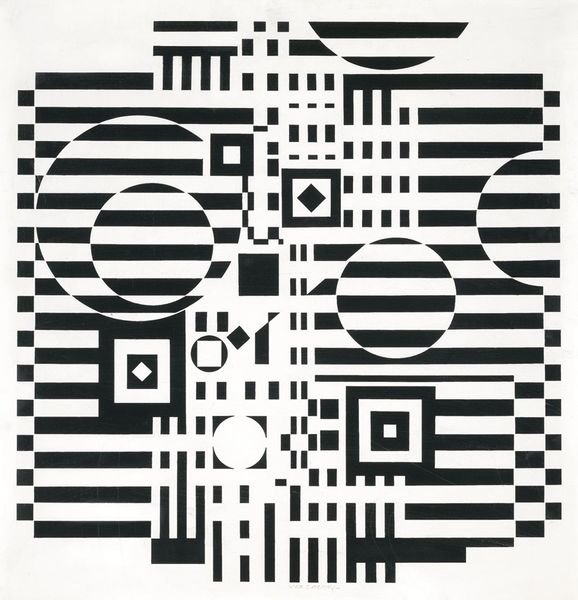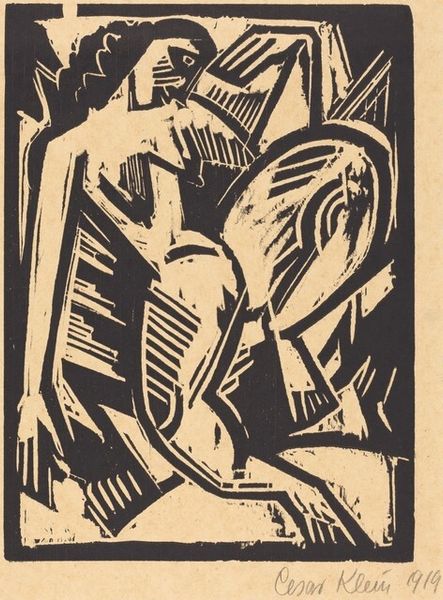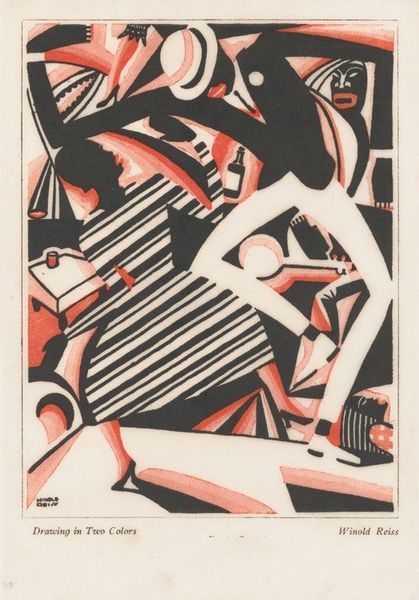
Dimensions: image: 10 x 6.5 cm (3 15/16 x 2 9/16 in.) sheet: 14.4 x 10.2 cm (5 11/16 x 4 in.)
Copyright: National Gallery of Art: CC0 1.0
Editor: Here we have M.C. Escher's "M is een Muis" or "M is a Mouse," created in 1953. It's a striking print. I'm immediately drawn to how Escher transforms the letter M into both a geometric form and this almost playful mouse peeking out. What's your interpretation of this work? Curator: Well, it’s fascinating how Escher uses the formal constraints of the letter 'M' to create an illusion. He's playing with perspective, but it also invites us to think about how systems of representation – like language itself – can both liberate and confine our perceptions. The mouse emerges from this very constructed, geometric space, almost as if critiquing it. Editor: Critiquing it? That's interesting. I mostly saw the visual game. Curator: Absolutely, the visual play is key. But consider Escher's wider body of work. He's often interrogating the limits of logic, right? And isn’t that what language, at its core, attempts to do – impose a logic? So, here, could the "M," this rigid structure, also represent the structures of power or knowledge that seek to categorize and define, while the mouse represents something more elusive, resistant to those categories? Editor: That makes me see it differently, especially thinking about the time it was made. Was Escher commenting on societal structures? Curator: It's hard to say definitively what Escher intended, and assigning a single meaning can be limiting. However, situating the work within broader cultural discourses around conformity and the questioning of authority prevalent in the post-war period, can suggest how art provides a space for critiquing and re-imagining the world around us. What do you think? Editor: That gives me so much more to think about than just the optical illusion. I like the idea that the mouse pushes back. Curator: And perhaps that resistance, that playful disruption of the system, is where the true power of art lies. It prompts us to look beyond the surface and to question the structures that shape our perceptions.
Comments
No comments
Be the first to comment and join the conversation on the ultimate creative platform.
